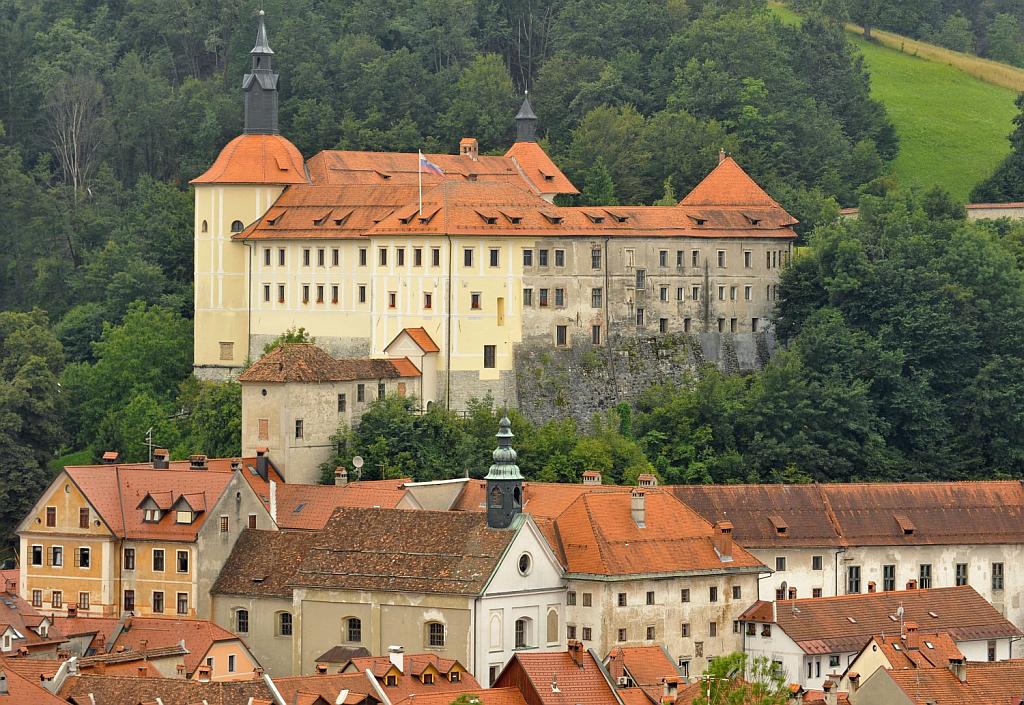
The ancient Slovenian town of Škofja Loka is renowned for its graceful beauty. Even its location, nestled beneath verdant hills, gives it a timeless feel. Perched on a hill just above the Old Town is the Loka Castle, whose long and often turbulent history has paralleled the historical development of the town below.
It is not known exactly when the first castle was built, but recent findings indicate that may have happened sometime in the ninth or the tenth century. Some sources indicate that no fewer than three castles may have stood on the top of the hill one time. Regardless of its exact origins, the castle became an important structure of the late Medieval era as the administrative seat for the Bishops of Freising, Bavaria, who owned vast tracts of feudal land in this part of modern-day Slovenia.
A powerful earthquake in 1511 damaged the original structure; that’s when the castle got its present appearance. A major renovation followed in 1716. For years, the castle continued its role as the headquarters of the Lordship of Bischoflack, one of the most important parts of the Bishops’ principality; it then passed into the hands of various noble families.
The nineteenth century and the downfall of the nobility saw the castle change hands many times. Its owners ranged from wealthy industrialists to the state, which used it to house administrative offices.
Finally, it was bought by the Ursuline Nuns in 1890. They hired an architect named Viljem Treo to remodel the castle and connect it to their nearby monastery.
During World War I, the castle served as a field hospital, but it was returned to the nuns after the conflict. World War II affected the castle deeply. It was first taken over by the Germans and then housed prisoners of war after the Germans’ defeated. Even the intricate frescoes in the castle’s chapel were whitewashed during that period.
In 1959, the Loka Castle became a museum. Now, visitors can learn about the history of both the Loka Castle and the ancient town it has overlooked for centuries. The frescoes have recently been uncovered and the newly restored chapel houses magnificent altars from the village of Dražgoše, which was destroyed by the Germans in World War II. Extensive renovations carried out since Slovenia’s independence have finally returned old glory to one of Škofja Loka’s proudest symbols.

































































